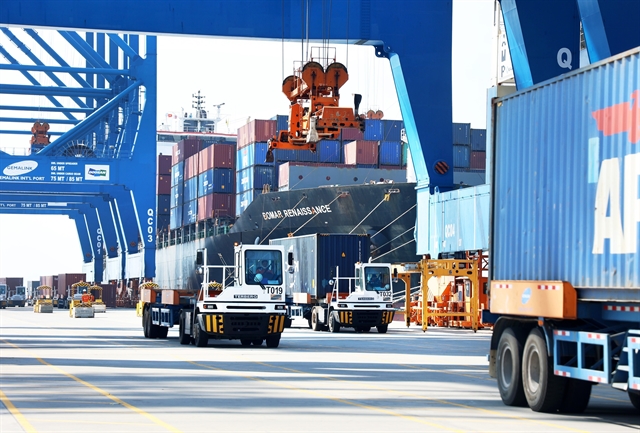Economists and business insiders say to manage currency fluctuations and protect their profit margins, some businesses have been adopting risk-hedging strategies.

HÀ NỘI — The USD/VNĐ exchange rate remains under pressure as ongoing trade tensions push the USD higher.
Economists and business insiders say to manage currency fluctuations and protect their profit margins, some businesses have been adopting risk-hedging strategies.
Economists say the USD/VNĐ rate stayed elevated in early 2025, influenced by shifts in the US trade policies. A major factor is the 25 per cent tariff on steel and aluminium imports, which has strengthened the USD by attracting capital inflows and pressuring emerging market currencies like the VNĐ.
As Vietnamese exporters and importers adjust to rising trade costs, foreign exchange volatility has intensified.
As of 7 February 2025, commercial banks quoted rates at 25,550 – 25,574 VNĐ/USD, reflecting a 137 đồng increase in the central exchange rate to 24,462 VNĐ/USD over four consecutive sessions.
Trần Thị Khánh Hiền, Head of Research at MB Securities (MBS), warned that trade-related risks would continue to strengthen the USD.
“Trump’s tariff policies reinforce the USD’s dominance, making it crucial to stay alert to exchange rate risks,” she said.
Vietcombank Securities (VCBS) forecast a 3 per cent depreciation of the VNĐ in 2025, citing imbalances in forex supply and demand alongside global uncertainties. Meanwhile, Dragon Capital (VDSC) expected the VNĐ to fluctuate within a +/-5 per cent range, with a potential year-end rate of 26,200 VNĐ/USD, depending on economic trends and policy responses.
Buffers
Despite challenges, Việt Nam’s economic fundamentals provide some stability. The country recorded a trade surplus of US$3.03 billion in January 2025, while foreign direct investment (FDI) disbursement reached $1.51 billion, up 2 per cent year on year, strengthening forex reserves and increasing foreign currency liquidity. A 36.9 per cent year-on-year surge in tourism revenue has further boosted foreign exchange inflows, helping to stabilise the VNĐ.
A stronger greenback makes Vietnamese exports more competitive internationally but raises costs for imported materials and logistics. Business insiders say higher exchange rates increase revenue in VNĐ but, at the same time, drive up expenses for imported packaging and shipping.
To manage risks, businesses have been tweaking their financial strategies. FPT Corporation has expanded exports to Japan while borrowing in yen, hedging against USD fluctuations and benefiting from the yen’s depreciation.
EVN Genco 3 has restructured $81.5 million in foreign loans for the Mông Dương 1 Power Plant, reducing financial costs through domestic refinancing. Many import-export firms preferred forward contracts to lock in exchange rates and avoid sudden fluctuations.
Đinh Quang Hoàn, Chairman of HIPC Group, highlighted the importance of stability, stating that hedging would help businesses control costs and maintain consumer prices, shielding them from sudden currency shocks.
Given the current volatility, businesses have been urging the government to take measures to stabilise exchange rates. Key recommendations include increasing forex reserves, strengthening trade agreements to secure reliable export markets, and fine-tuning monetary policies to balance growth with inflation control. They claim a predictable exchange rate environment will be crucial for maintaining investor confidence and protecting the economy from external shocks. — VNS





